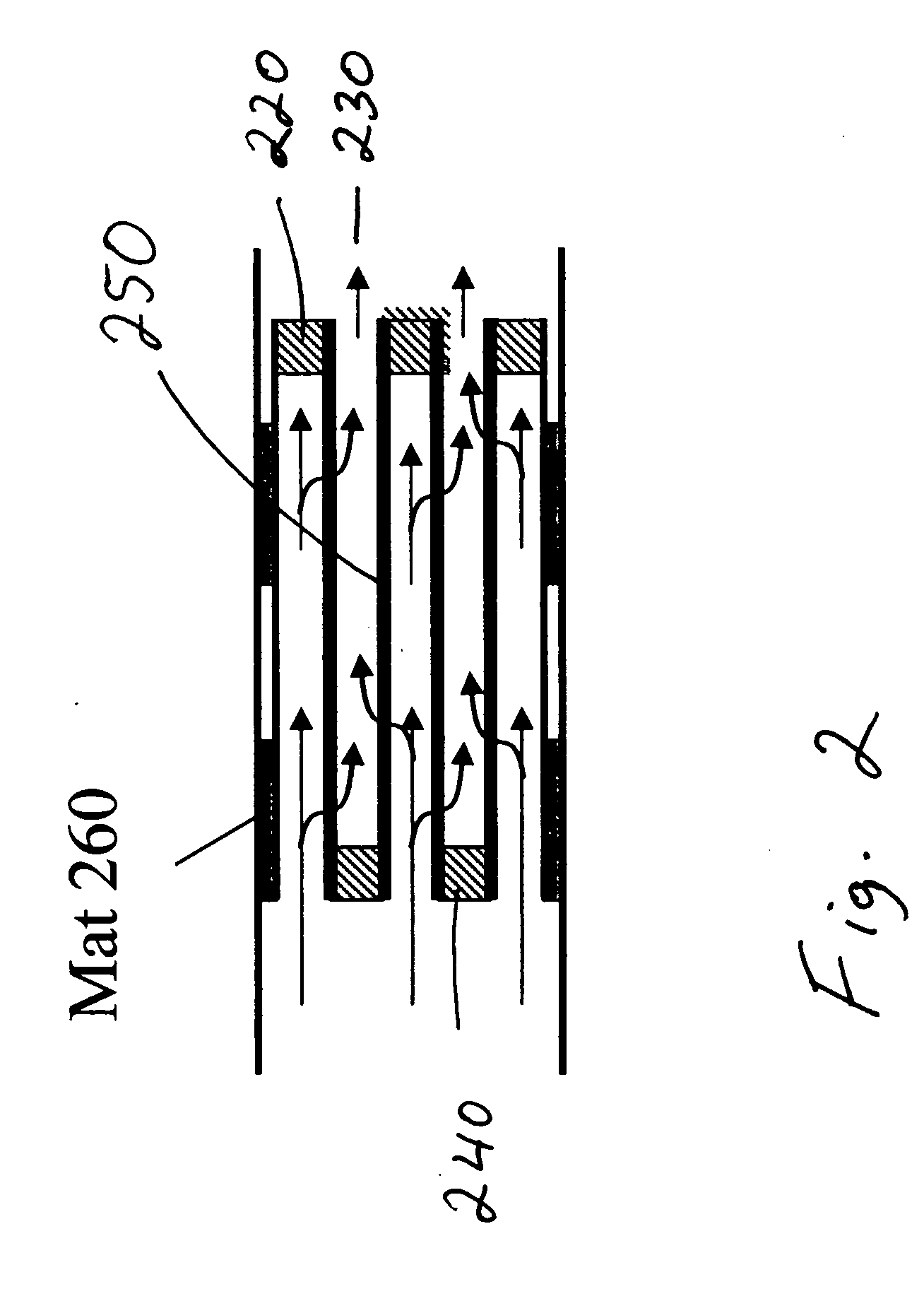[0007] An
advantage of the present invention is a startup combustor having a filter that is arranged upstream of a fuel reformer, which traps soot generated at startup. During the startup period, the startup combustor functions to regenerate the filter by burning, i.e., oxidizing, the trapped soot by combusting a lean fuel-air mixture in the startup combustor thereby regenerating the filter while continuously heating downstream system components.
[0008] These and other advantages are satisfied, at least in part, by a fuel
processing system that includes a startup combustor having a filter. In an embodiment of the present invention, the startup combustor comprises a chamber for combusting fuel; an air port connected to the chamber for introducing air to the chamber; a fuel port connected to the chamber for introducing fuel to the chamber; an ignition source connected to the chamber for igniting the fuel and air introduced thereto; and a filter that is connected to or included in the chamber which is located downstream of the ignition source for
trapping any non-gaseous components, i.e., soot. The filter is advantageously capable of preventing at least a portion of any non-gaseous particles that may be formed during the
combustion of the fuel in the chamber at the ignition source from passing therethrough. The filter can also prevent at least a portion of any non-gaseous particles contained in the air or fuel introduced to the chamber from passing through it as well.
[0009] Advantageously, the startup combustor functions to regenerate the filter by burning and eliminating the trapped soot by a lean-fuel
combustion in the startup combustor, which can be accomplished by introducing an excess air to fuel ratio. For example, in regenerating the filter, an
air compressor can control the volume of air introduced to the combustor; a fuel
injector can control the amount of fuel to the combustor; and a computer can be programmed to control the rotation speed of the
air compressor and the pulse width of the fuel
injector according to operating condition. Each control parameter can be set by experiment in advance.
[0010] Embodiments of the present invention include a series of filters in or connected to the combustor which are located downstream of the ignition source or where combustion takes place; a port for introducing a cooling source to cool the outflow of gases exiting the one or more filters; a pressure gauge for detecting the pressure across the one or more filters at any given time; a reformer downstream of the filter for reforming the hydrocarbon fuel; a water / gas shift reactor downstream of the reformer for further reforming the hydrocarbon fuel; and a preferential catalyst downstream of the water / gas shift reactor for oxidizing various components contained in the reformed fuel.
[0011] Another aspect of the present invention includes a process for removing non-gaseous components, e.g., soot, in a combustor which are collected on a filter downstream of where combustion takes place. The process comprises combusting a hydrocarbon fuel to form a combustion gas stream that is then passed through a filter. As used herein, a combustion gas stream is meant the gases resulting from the combustion of a hydrocarbon fuel in a combustor. While the combusted gases contain carbon, hydrogen and
oxygen based products, the gases are not limited thereto. The combustion gas stream at times can contain
solid particles, which are likely carbon based. The combustion in this aspect of the invention takes place before the gases reach the reformer. The combusted gases are then passed through a filter, which collects or traps any
solid particles contained in the combusted gas, referred to herein as soot. This soot can be reduced or eliminated from the filter by burning the fuel in the combustor at a leaner air-fuel mixture. Hence, the present invention advantageously permits the regeneration of the filter associated with the combustor while the combusted gases are continuously heating downstream components of the fuel
processing system.
[0012] Embodiments of the present process includes determining the temperature of gases exiting the filter, i.e., the filter outflow temperature, and adjusting the temperature of the gases exiting the filter with a cooling source so that the
inlet temperature of the reformer or any other component downstream of the combustor and the filter do not experience excessive temperatures that may degrade their performance.
 Login to View More
Login to View More  Login to View More
Login to View More 


